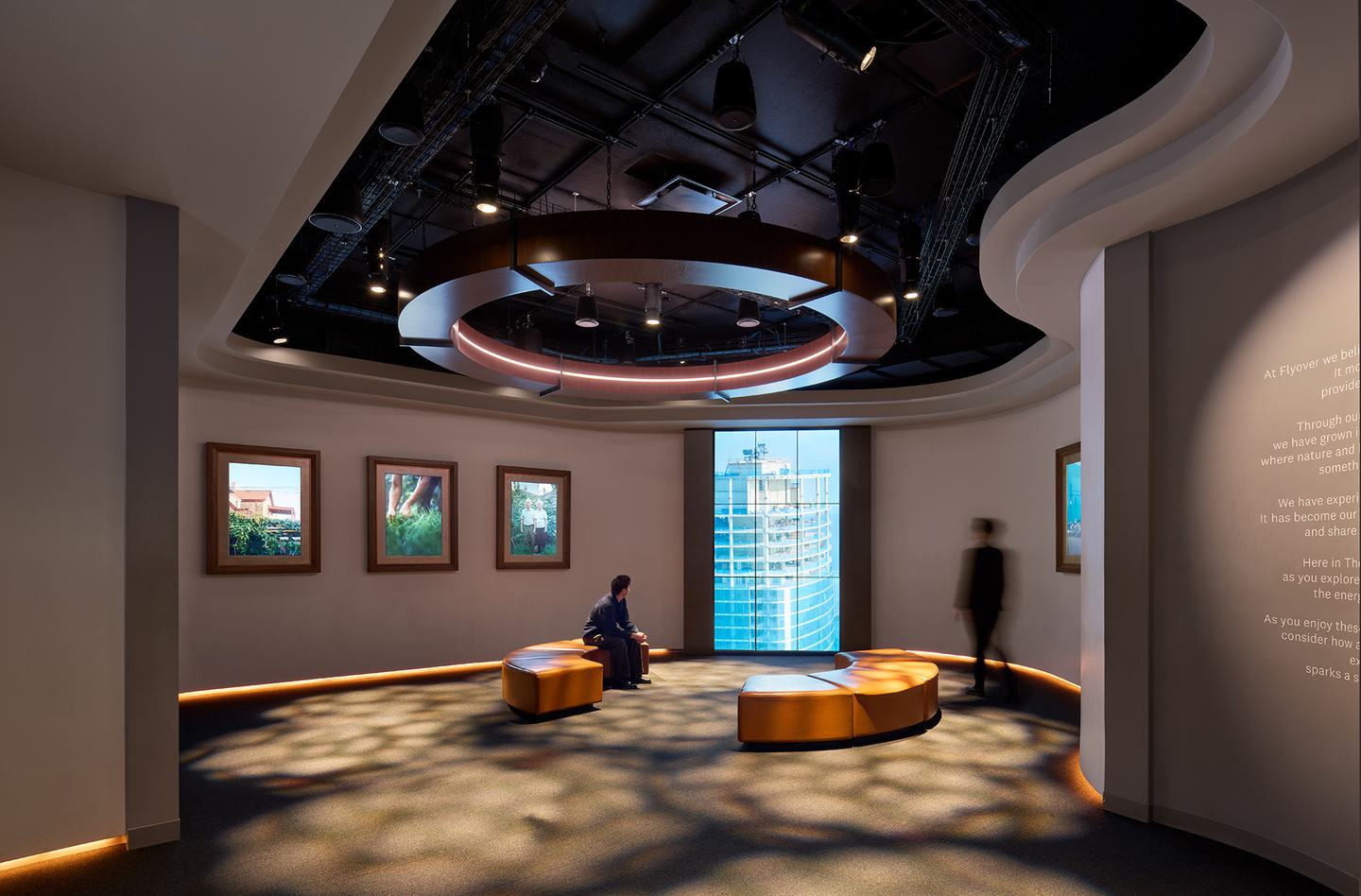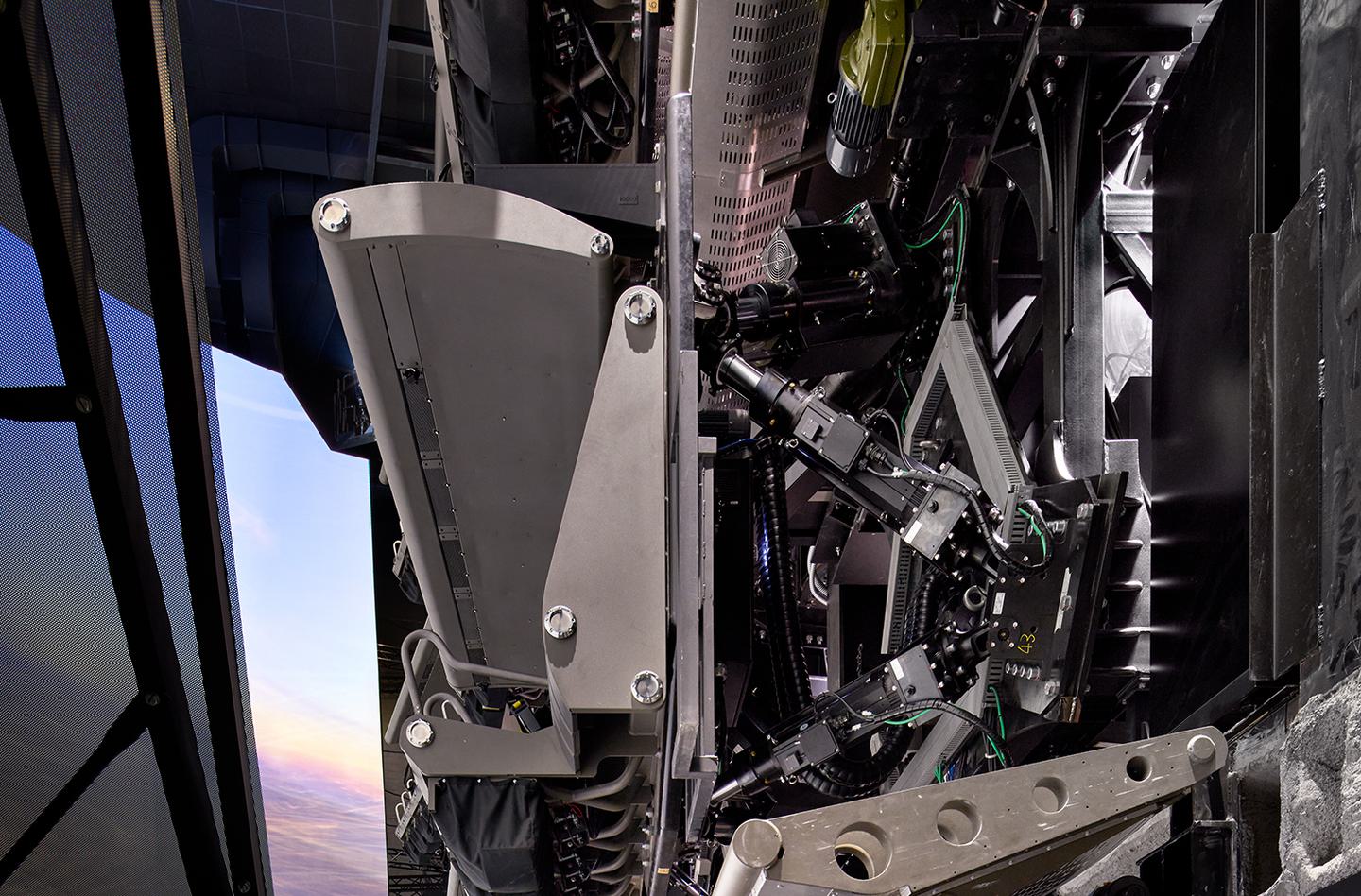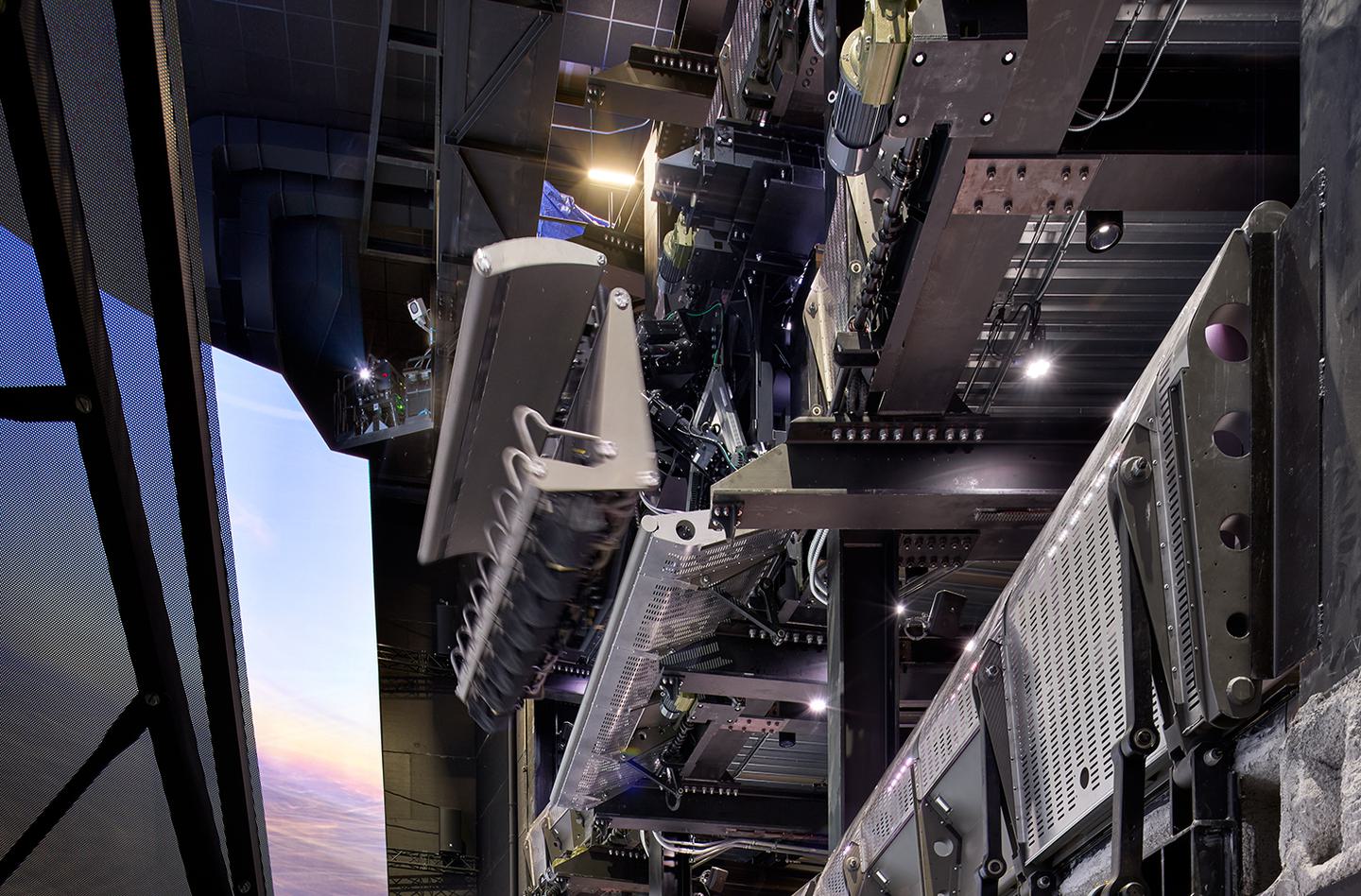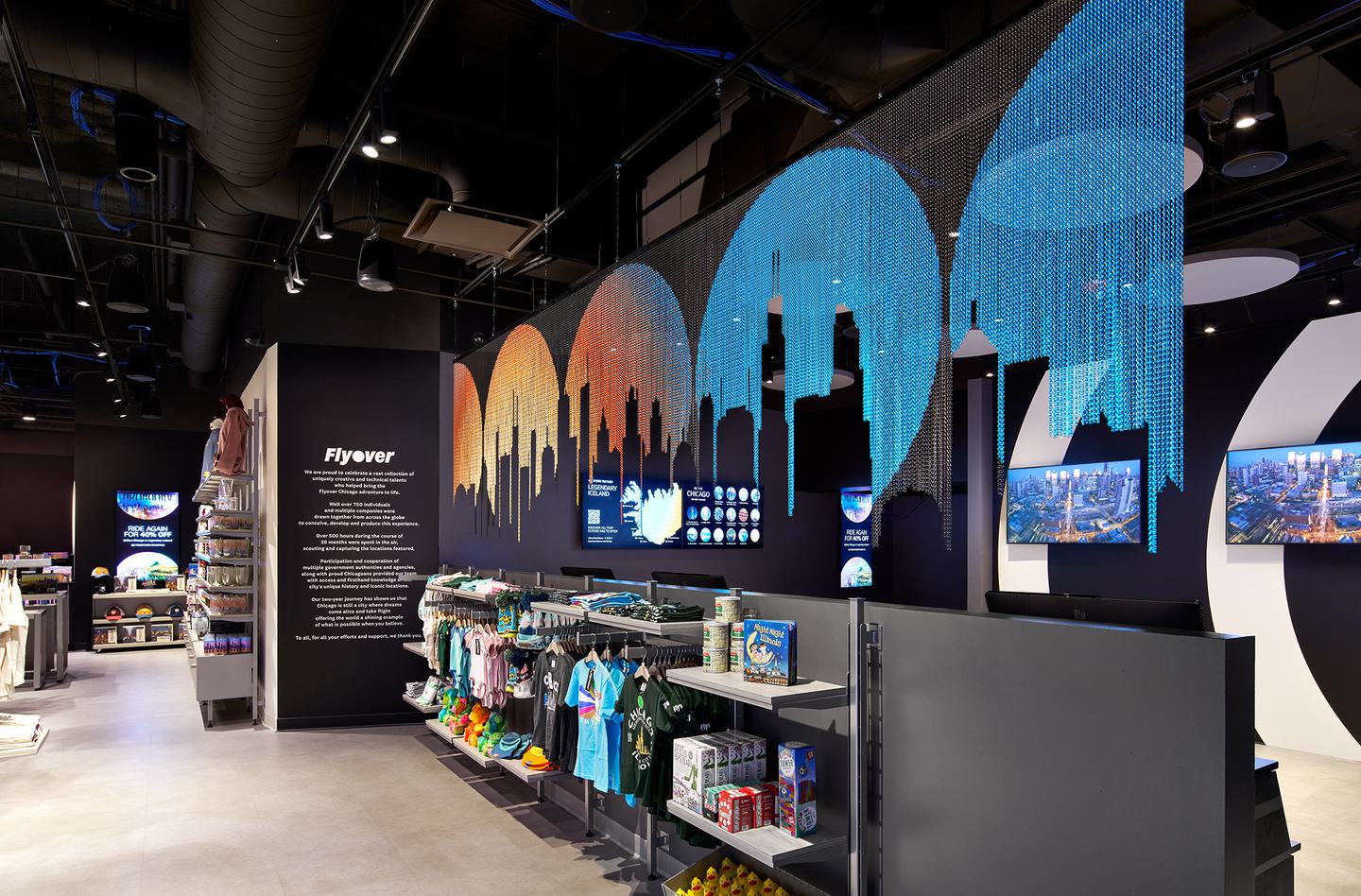All these designers were guided and coordinated by Flyover’s creative team. McHugh Construction was engaged at the start of the project to assist with exploratory demolition, constructability reviews, and phased construction planning, which greatly aided the speed and quality of construction.
Flyover was constructed within the existing envelope of the old IMAX theater at Chicago’s Navy Pier. The volume of the IMAX and the volume required for the three-story ride structure and hemispheric screen were not aligned, nor were the floor levels of Navy Pier aligned with the floor levels of the ride structure. Epstein engineered new floor slabs, structure, ramps, three stairwells, and one elevator to connect the two Navy Pier levels with the three levels of the ride and accompanying show spaces, maintaining required egress components in this complicated network of circulation. To achieve these complex geometries and find sufficient routes for ductwork and conduit around the ride volume, Epstein used 3D laser scanning of the existing space, detailed Revit modeling of all components, and Navisworks clash detection throughout the design and construction phases. Epstein’s shared the Revit design model with McHugh Construction, who used it to aid their subcontractors in designing the final installation of building systems components. Ultimately, this three-dimensional planning and coordination yielded on-time construction of the project, and a beautiful, engaging guest experience.
Structural challenges centered around the dynamic nature of the Flyover ride, which imposes significant forces in many directions. Epstein’s structural engineers worked with Brogent, the ride designer, to understand the forces and translate them into structural loads imposed on the existing building. The foundation system of Navy Pier comprises caissons and grade beams. In multiple locations, new grade beams were installed to transmit these loads to multiple caissons. The design avoided dropping new deep foundations in the complicated and crowded space below Navy Pier. All of this heavy construction work was completed within the Family Pavilion of Navy Pier, working in the off season and in off-hours to avoid disturbing guests and other pier tenants.
Not only does the ride move dynamically, the ride soundtrack, and the soundtrack for the accompanying show spaces feature original symphony scores, vocal arrangements, voice overs and sound effects. It was essential that no sound or vibration from any one show space be transmitted to the adjacent show spaces, or to adjacent retail, museum, or office tenants. Arup provided acoustical services throughout design and construction phases. They provided design reviews of the project and provided recommended critical detailing and specifications. During construction, they provided field reports noting potential sound transmission points. Arup also provided a vibration analysis report for the ride itself measuring the vibration transmission to the adjacent spaces. This thoughtful planning, focused design, and thorough follow-through yielded a project with no discernable acoustic impacts to the adjacent spaces.
The key component to the Flyover ride is the three-story hemispheric screen and large-scale laser projectors. The projectors are extremely sensitive to vibration and movement but must be easily accessible for maintenance. To accommodate these parameters, the projectors were mounted to a catwalk above the ride. To avoid vibrations, the catwalk structure is a pair of clear-span trusses supported on independent column supports, rather than hung from the roof deck, as the roof deck would have resulted in too much movement. This coordination yielded the flawless visual projection that Flyover demanded.




